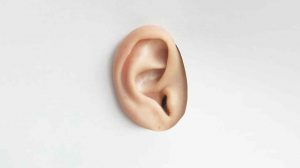Fibroadenoma is the most common cause of breast lumps in young women aged around 20–30 years.
Fibroadenoma Understanding
Fibroadenomas are the most common cause of breast lumps in young women aged around 20–30 years. In fact, fibroadenomas can appear in women of any age and even in men – although they are very rare.
Fibroadenomas are divided into three types:
- Simple fibroadenoma
A lump 1–3 cm in size. When examined under a microscope, the cell types of simple fibroadenomas all look the same. - Complex fibroadenoma
The cells of a complex fibroadenoma will show distinct features. If you have a benign tumor, it will increase your risk of developing a malignant tumor or breast cancer in the future. - Giant fibroadenoma ( giant )
The size of a fibroadenoma can sometimes exceed 5 cm so it is called a giant fibroadenoma. Often this disease is found in teenage girls so it is often referred to as juvenile fibroadenoma.
Fibroadenoma Reason
Until now, the exact cause of fibroadenoma is still unknown. Theory links the appearance of fibroadenoma with increased sensitivity to the hormone estrogen.
This benign breast tumor develops from a single lobule (milk-producing gland). The glandular tissue around the lobules and ducts grows and forms solid lumps.
Fibroadenoma Diagnosis
The doctor will diagnose a fibroadenoma from a physical examination and investigation of a lump in the breast. The physical examination includes the characteristics of the lump.
Supporting examinations such as ultrasound are also carried out to identify lumps. Usually in young women around the age of 20, a physical examination and ultrasound are sufficient. Mammogram examination is performed on women aged 40 years and over. In certain cases that are still difficult to identify, a biopsy may be needed.
Fibroadenoma Symptom
A fibroadenoma will appear as a breast lump. The lump is easy to move when touched and feels solid. Usually, this breast tumor does not give pain. However, sometimes it can be painful when touched or painful when menstruating. New fibroadenomas may appear one or more lumps at a time after the old ones have been removed. The lump does not mean that the old lump has reappeared.
Fibroadenoma Treatment
Oftentimes, fibroadenomas will shrink and disappear on their own. In rare cases, such as a giant fibroadenoma, a surgical procedure is required by a doctor. Fibroadenomas usually enlarge when you are pregnant or breastfeeding. However, it will shrink back after finishing pregnancy or breastfeeding.












Add Comment